Natural Stone Tiles - Are You Ready to Be Truly Amazed?
By Editorial Team
Updated on January 24, 2025
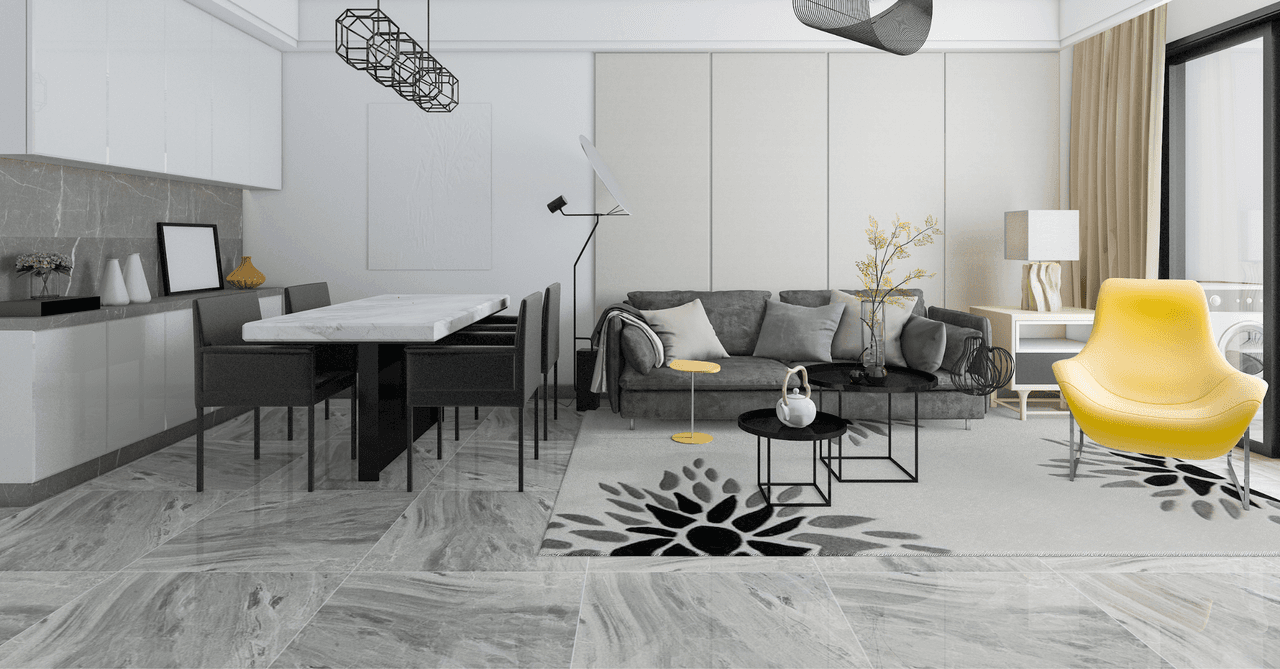
Natural stone tiles make for absolutely stunning flooring as each and every tile is unique. While ceramic tiles or stoneware are made with synthetic raw materials, natural stone tile is extruded from quarries around the world.
Each stone has distinctive characteristics that are unique to each. Therefore, its strength, resistance, porosity, colours, and textures will vary, however, their advantages will remain alike.
Natural stone tiles are especially valued for their aesthetic appeal, which adds a luxurious touch to any home. Their smooth and glossy finish, which subtly reflects daylight, adds depth and brightens up any and all rooms.
Uncover a wide variety of colours and finishes suited to all decorative styles.
What Is the Most Commonly Used Natural Stone Tile?
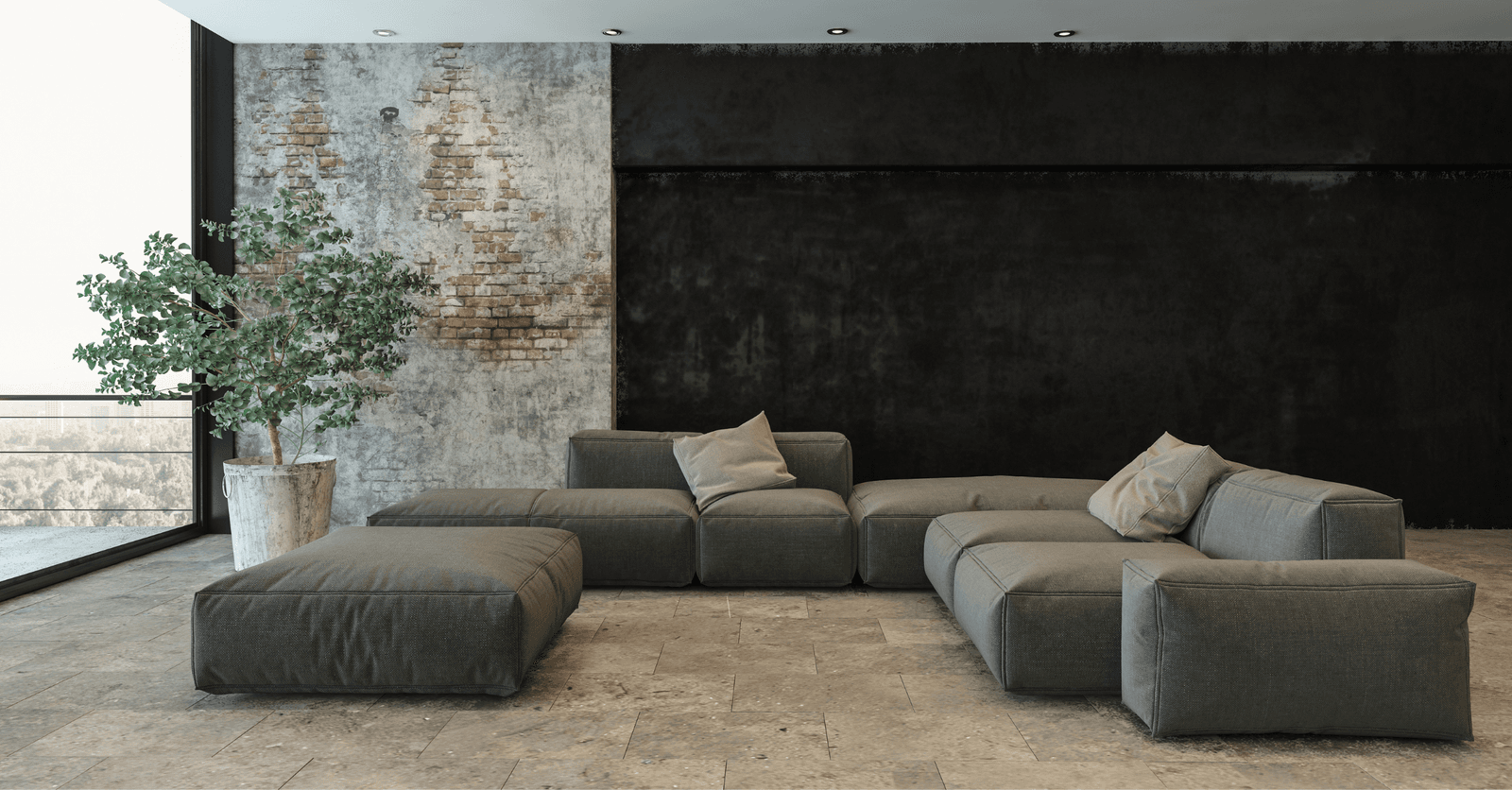
Source: Canva
The Advantages of Travertine
Travertine is a sedimentary rock, a type of porous limestone that’s lighter than marble and granite and easier to cut. While it’s originally white in colour, a myriad of impurities may give it a slightly beige to dark brown hue, by way of beautiful grey tints.
Travertine tiles are:
Shock-resistant
Wear-resistant
Solid and durable
Eco-friendly
Anti-slip
Easy to install
Low maintenance (the stone’s minor irregularities/grooves can be filled to facilitate maintenance)
Retailed in various formats and finishings
The Advantages of Marble
Marble tiles are natural and aesthetic and immediately convey a unique appeal in a home. For the longest time, marble has been considered a high-end stone, metamorphosing walls and floors in the most prestigious of homes.
Its numerous shades and finishes ultimately depend on the ground, erosion, and components it came into contact with during its formation. Similarly to wood, marble tiles come in a variety of essences with names derived from their origin: Egyptian marble, Portuguese marble, Carrara marble, etc.
Marble tiles are:
Especially elegant
Luxurious
Robust and durable
Timeless
Bright
Nearly as prevalent on walls as on floors
The Advantages of Granite
Granite is an igneous rock. Its comeback isn’t solely due to its numerous qualities, and retailed in an array of shades suited to all homes and styles.
Granite tiles are available in shades of light grey to black, with an assortment of beige, yellow, red, and even blue tones. These lovely shades are a result of surrounding environmental influences as well as the stone’s crystalization phase and mineral content.
Granite tiles are:
Robust
Scratch-, stain-, and water-resistant
Withstand substantial loads
Available in a wide range of formats
Low maintenance
Anti-slip
Need no treatment
Retailed in a vast array of colours
The Advantages of Slate
Slate is a sedimentary-derived metamorphic rock that contains different minerals such as quartz, feldspar, mica, hematite, graphite, and chlorite. Visually speaking, it has a sheet-like structure.
Historically, it was the go-to in ancestral homes. Nowadays, it’s rather favoured in contemporary and modern interiors, pairing beautifully with wood and metal.
Slate tiles are:
Very resistant
Extremely durable
Relatively non-porous
Scratch-resistant
Stain-resistant
Lighter than other natural stones
Low maintenance
The Advantages of Limestone
Limestone adds unrivalled elegance to your home on account of its soft shade and delicate aesthetic. It moulds to any and all styles due to its rich, divot-like, buffed, or brushed surface.
Limestone is:
Subtle yet elegant
Smooth
Available in various finishes
Low maintenance
Easy to install
Soft and easy to carve
Are Natural Stone Tiles Expensive?
Natural Stone | Price Point |
Marble | $15–$50/sq. ft. |
Granite | $10–$30/sq. ft. |
Slate | $5–$25/sq. ft. |
Travertine | $5–$20/sq. ft. |
Limestone | $8–$25/sq. ft. |
Natural stone tiles are expensive. This isn’t all too surprising given that every stone is imported, must be extracted from a quarry halfway around the world, and is relatively heavy.
Are you drawn to natural stone tiles, but not so much their price? What about travertine tiles? Depending on their origin, finish, and quality, they can be 20% cheaper than marble and slate, making them the most affordable natural stone tiles retailed in stores.
Natural Stone Tile Flooring and Wall Covering
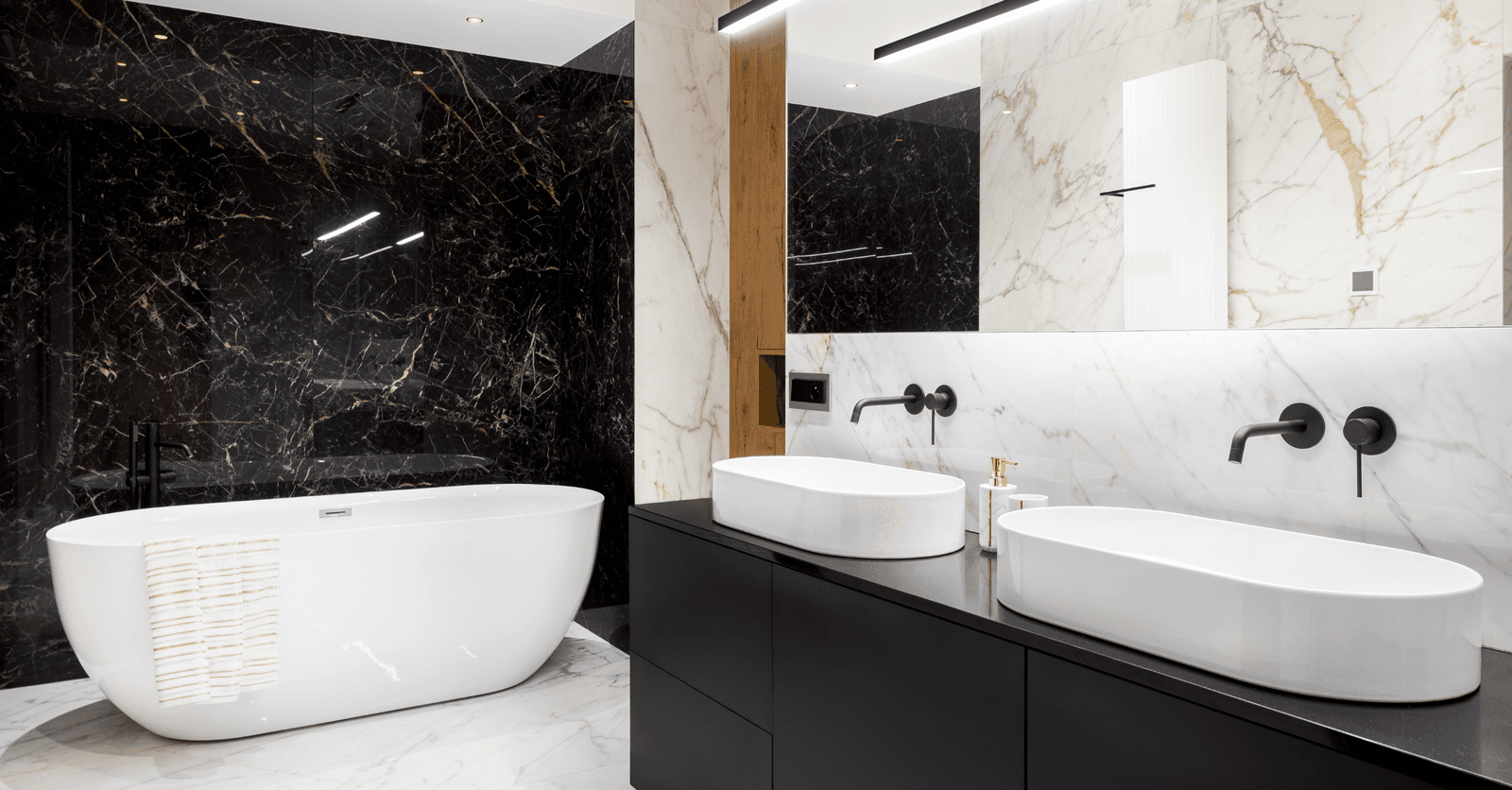
Source: Canva
How to Use Natural Stone Tiles Indoors
A Natural Stone Tiled Living Room
Warm, rustic, or modern in nature, natural stone tiles are perfect in a living room setting. Such tiles can be paired with an underfloor heating system, offering additional thermal comfort, meaning it easily tops other flooring options that don’t allow for this type of must-have heating option.
This material is conductive, meaning it stores and releases heat in an even fashion. Natural stone can also be used to keep rooms cool during summertime, and it seamlessly adapts to temperature fluctuations.
Natural Stone Tiled Kitchen
Natural stone is anti-slip, humidity-resistant, and perfectly suited for a kitchen. Its other upsides: it’s easy to clean, stain-resistant, and practically non-porous. If needed, it can be coated in a water-repellent product.
Natural Stone Tiled Bathroom
While anti-slip tiles are a definite asset in the kitchen, it goes without saying, that said asset is especially appreciated in the bathroom. On an often damp floor, its finish limits the risks of falls. When the flooring is treated with a water-repellent coating, it isn’t as likely to deteriorate due to excess humidity or water exposure.
Natural Stone Tiled Shower
Since most natural stones are non-slip, there's no real need to apply a specially designed product to prevent slipping in the shower, as one might on other types of flooring. This luxurious tile is often found in walk-in showers.
Natural Stone Tile Mural
Is there anything more luxurious than a floor-to-ceiling, natural stone-tiled bathroom? Being able to tile the entire bathroom - floor, walls, and shower - using the same material adds opulence to this already sophisticated space. Natural stone tiles are a really clever option for bathrooms and kitchen walls that are constantly exposed to water splatter. The result: The entire structure is shielded from water and moisture. For a head-turning home aesthetic, you can also tile a wall in your living room, dining room, or another space for modern and Mediterranean appeal.
Using Natural Stone Tiles Outdoors
The anti-slip properties of natural stone are especially appreciated outdoors, during rainy days or around pools. Since the stone has to withstand temperature changes as well as freeze, it’s relatively thick. The chosen product should be suited to outdoor use and properly installed.
To benefit from such outdoor tiling for years on end, most natural stones are treated every three years to preserve their integrity and safeguard the material from moisture and freeze.
Available Natural Stone Tile Colours
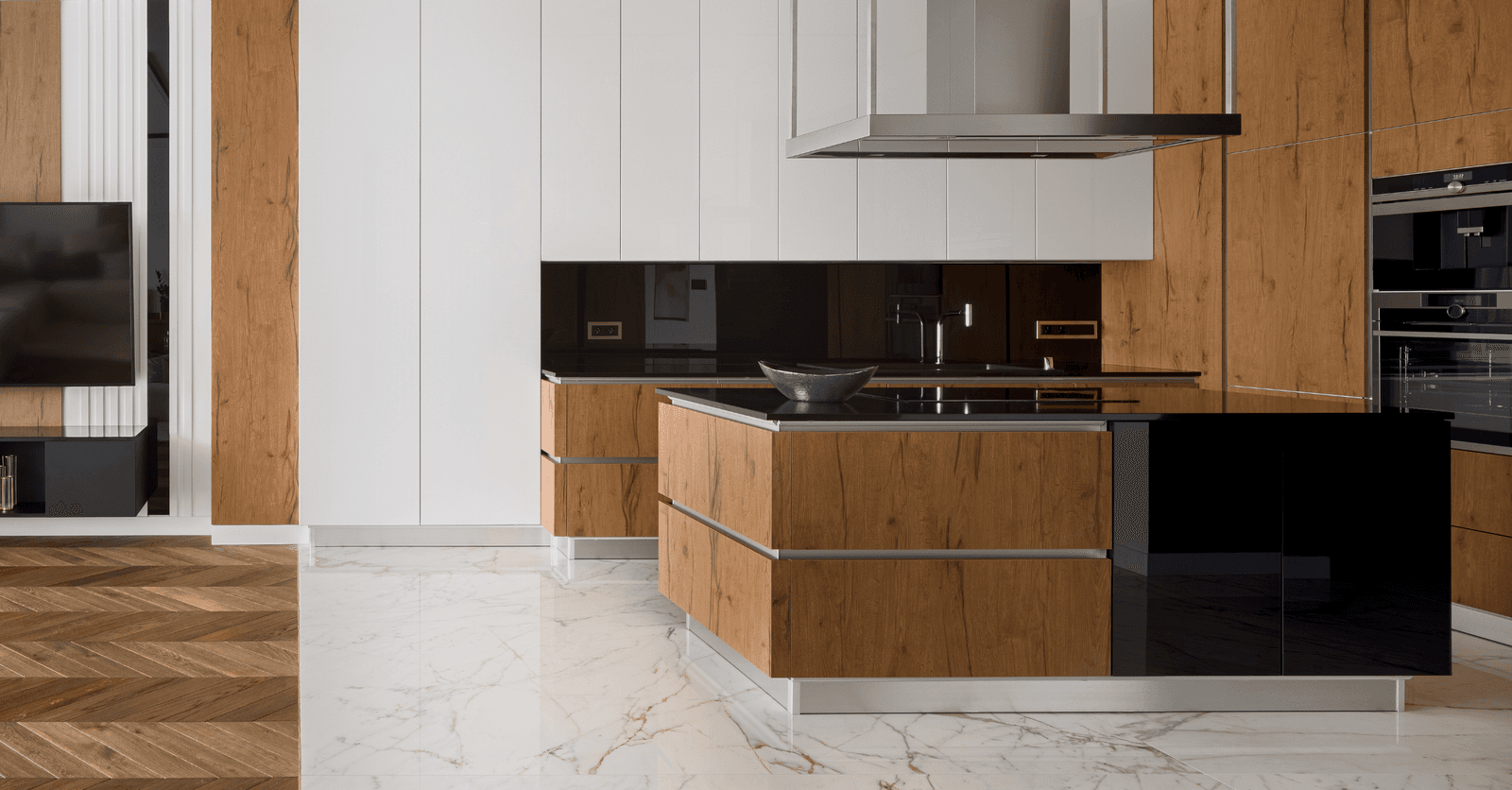
Source: Canva
White
White natural stone is refined and elegant, ideal for kitchens and bathrooms, areas in which there’s an emphasis on cleanliness. Whether immaculate or veiny, it conveys a distinctive and distinguished appeal.
Beige
Beige, brown, or coppery tones give off a cozy feel to a space. Given the different hues found on natural stones, it also adds some texture to the floor.
Grey
Grey is both neutral and modern and is especially suited to wood. Natural stone has a great colour scheme, available in a pearly grey to a darker charcoal.
Black
Black tiling adds depth and a rather glistening aspect to a room. While this shade has seen a minor decline in popularity, its effect is just as remarkable whether laid in a bathroom or kitchen.
Other Available Shades
Aside from the previously mentioned colours, some natural stones come in shades of green, pink, and blue, most notably seen with marble.
How to Lay Natural Stone Tiles

Source: Canva
There are two methods used to lay natural stone tiles. Depending on the ground in question, you can either proceed with a mortar or adhesive application, the former being the traditional go around, while the latter is faster is simpler to undertake.
Mortar Application
Lay each tile in a 3 to 4 cm-thick mortar bed. The grout joints—at least 5 mm wide—are done with a white cement slurry. Allow to set for 3 to 4 weeks before cleaning with clean water to eliminate any residual dirt.
Adhesive Application
Instead, opt for a thick, yet supple, tile adhesive. It’s faster and simpler to use, and cures after 24 to 48 hours, compared to the traditional 72 hours of a traditional installation.
Natural Stone Tiles: A Little Slice of Nature
Natural stone tiles embody a certain timeless charm wrapped in genuine authenticity, providing a unique appeal to whichever desired space. Given its different textures, colours, and patterns, you can creatively customize your floors and walls. Using natural stone tiles adds an unrivalled elegance, whether used in traditional, rustic, or contemporary settings. However, note the maintenance and care guidelines specific to natural stone to preserve its appeal over time.
FAQ About Natural Stone Tile Installation
What is the best type of natural stone tile joint filler?
When it comes to natural stone tiles, use an acid-free silicone sealant specially designed for natural stones. Make sure to use a product that won’t stain the tile. A white mortar joint filler will due just fine with all light-hued natural stones. A grey mortar joint filler will better highlight darker-hued stones.
How to clean natural stone tiles in showers and elsewhere?
Natural stone tiles are low maintenance. Those with porous properties, like travertine, can be coated in a water-repellent product, sealing the tile. Some stones may also benefit from anti-stain care.
Before cleaning natural stone tiles, sweep or vacuum the surface. Most often, a daily cleaning in high-traffic areas and a weekly cleaning in less frequented areas will be plenty.
When cleaning the tiles, use cleaners with a neutral pH or multi-purpose black soap. Rinse with clean water and dry as much as possible to prevent water from seeping into the stone.
Looking for something else?
Table of contents
8 min read
Download the price guide for renovations
We’ll be emailing you the latest market price guide for renovations.
Related articles
The latest industry news, interviews, technologies, and resources.
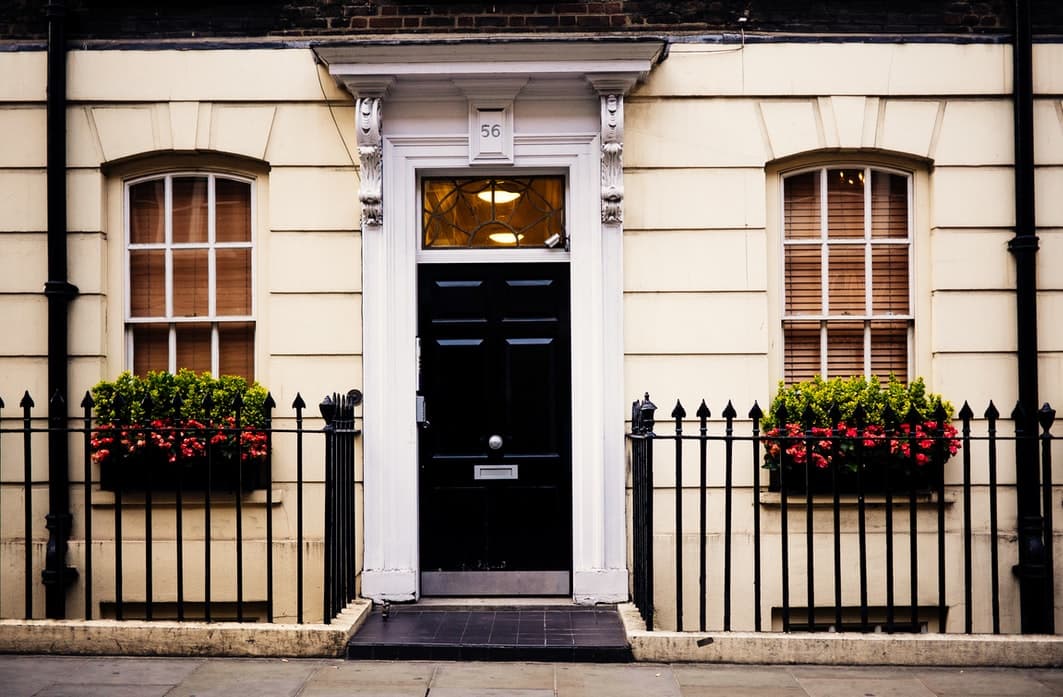
Editorial Team
•07 Nov 2023
Because of their popularity, hinged, sliding or hung windows rarely need presentation. But what about the fanlight?

Editorial Team
•10 May 2024
There are many hidden costs and concerns regarding the use of air conditioning in the home. Most air conditioning units operate using hydrofluorocarbons to cool the ambient air, which are slowly being phased out due to their ability to deplete the ozone layer of our planet.

Editorial Team
•07 Nov 2023
Rail-mounted light systems are a wonderful and versatile fixture made to suit the needs and décor of any home. This style of light consists of an electrical track that mounts to the wall or ceiling, with individual lamps attached at various points along the track.

Paul Riopel
•08 May 2024
Venturing into the construction industry in Ontario? This guide will walk you through the steps to become a licenced general contractor. Starting with completing your high school education, gaining work experience, and honing your skills, you'll learn everything you need to kickstart your journey.

Editorial Team
•07 Nov 2023
If you’re living in a mobile home or you’re in possession of one for traveling, chances are you're already well aware of the benefits. A mobile home is a dream for nomads, travelers, and all those in between. If you’re one of the lucky ones who has access to a mobile home, you may feel a little bit stunned by the size of the structure.